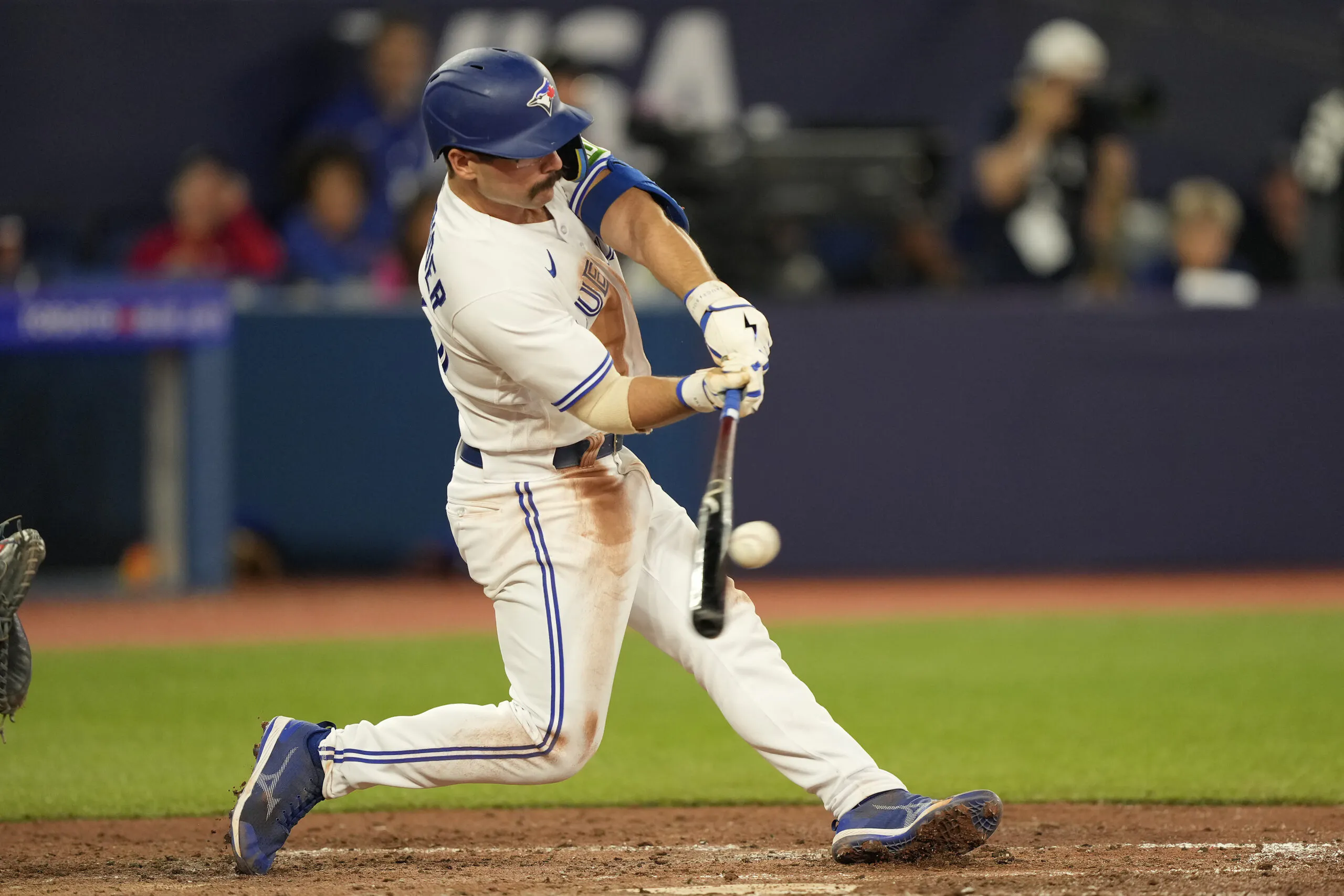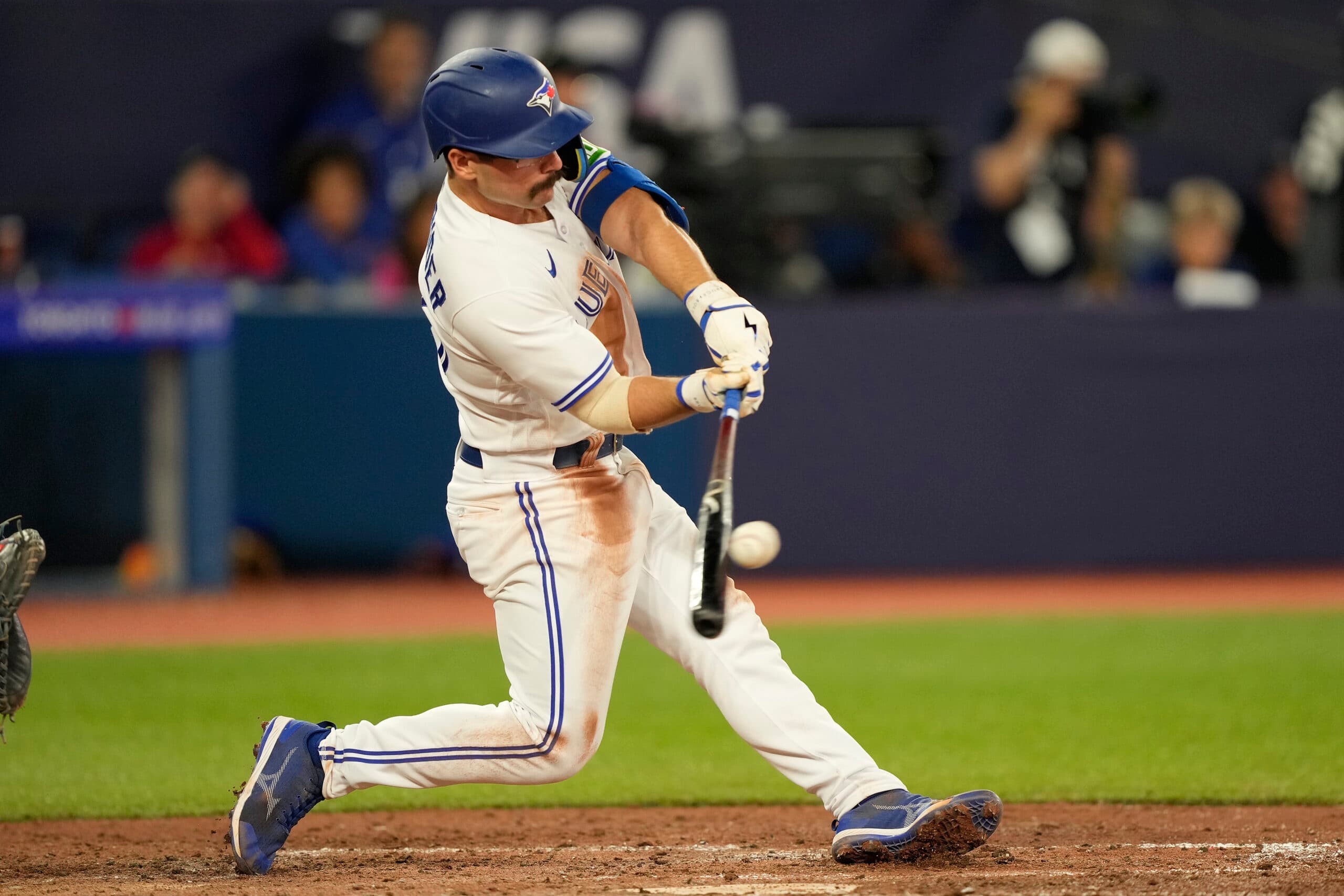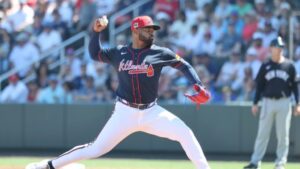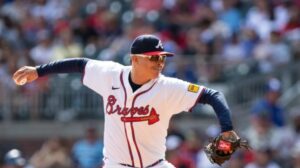
Without Davis Schneider, the 2023 Blue Jays might not have reached the postseason. In the last two months of the season, Schneider’s impressive performance, including 12 home runs and a 1.008 OPS, significantly boosted the team’s offensive output.
Last year, Davis Schneider emerged as an unexpected offensive hero for the Blue Jays. This season, the team is relying on him to maintain that role. With few additions to the lineup during the offseason, Toronto is heavily dependent on its existing players, including Schneider. However, the challenge for him in 2024 will be tougher. While Schneider’s debut season showed impressive potential, with projected statistics over a full campaign suggesting MVP-level performance, opposing teams quickly adjusted to his playing style. Despite strong slugging and on-base percentages, Schneider’s contact rate dropped significantly towards the end of the season, indicating a need for adaptation in his approach.
Opposing pitchers made a notable adjustment by increasing their usage of fastballs against Davis Schneider, particularly in September. This adjustment was even more pronounced when Schneider was behind in the count, with a significant percentage of fastballs thrown, contrary to the typical approach of using off-speed pitches in such situations. Schneider had openly acknowledged his weakness against high fastballs upon entering the league, and opponents capitalized on this vulnerability. By the end of the season, Schneider’s difficulty with high four-seam fastballs, especially those thrown high and outside, became increasingly evident, resulting in higher whiff rates.
Despite the challenge posed by high fastballs, Davis Schneider remains a potent hitter, particularly thriving against pitches in the lower part of the strike zone. However, it’s essential to acknowledge the impact that struggles with high-velocity fastballs can have on a player’s performance. Last season, both Matt Chapman and Daulton Varsho experienced difficulties against four-seamers, resulting in frustrating at-bats for them and their fans.
Chapman and Varsho attempted swing adjustments to address their fastball struggles, but for Schneider in 2024, the strategy may be simpler: avoid the high heat whenever possible. The Blue Jays’ projected second baseman/left fielder duo had success against breaking pitches last season, and they still managed to connect with plenty of lower fastballs. By waiting for pitches in his wheelhouse and resisting the urge to swing at high fastballs unless necessary, Schneider aims to maximize his effectiveness at the plate. So far in spring training, this approach seems to be his focus. According to Schneider, he recognizes that high fastballs aren’t pitches he can consistently drive for damage, so he plans to be more selective and disciplined, especially early in counts.
Schneider has been true to his word in spring training, demonstrating his disciplined approach at the plate. In the five spring games with available data, he’s faced 17 high fastballs and has either taken or fouled off the majority of them, swinging through only four. While it may not be the most thrilling sight to witness Schneider repeatedly lay off high fastballs during the season, his commitment to this strategy could pay dividends. By patiently waiting for pitches he can handle, such as breaking balls or pitches in the middle of the zone, Schneider aims to capitalize on opportunities to drive the ball effectively. While resisting the temptation to swing at tempting high fastballs may prove challenging, the Blue Jays are banking on Schneider’s refined approach to contribute positively to their success in 2024.






